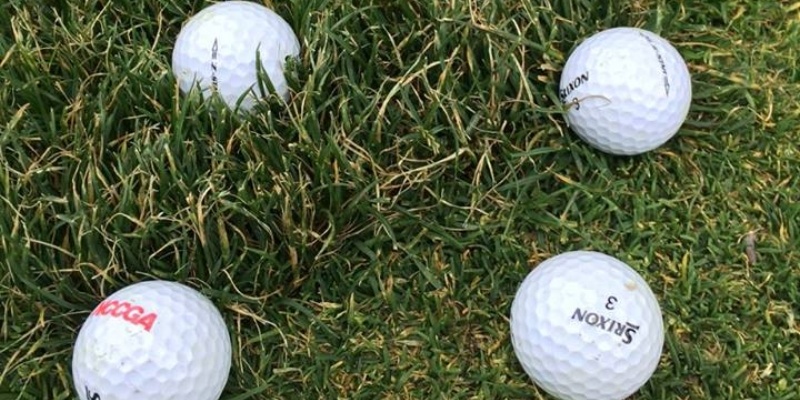This past weekend we had 12 club golf tournaments taking place across the country, and there were three scenarios that came up which caused some confusion for groups. Here are the three scenarios below, what would you have done if this happened to you or someone in your group? The result and corresponding golf rules (or NCCGA rules) are listed below to see if you chose the correct result:
Scenario 1
A player hits his second and third shots on a hole, only to realize that he hit an incorrect ball on the second shot. Is the player penalized twice for hitting an incorrect ball twice?
Scenario 2
A player’s ball comes to rest with a telephone pole in his line of play to the hole, but not interfering with his stance or swing. Is the player entitled to relief?
Scenario 3
Team A and Team B play in the NCCGA. After two days of competition, their team scores are identical and they are tied for first place.
(NO PEEKING BELOW THIS LINE UNTIL YOU'RE READY)
--------------------------------------------------------------------------
Resolution 1
Rule 15-3b:
If a competitor makes a stroke or strokes at a wrong ball, he incurs a penalty of two strokes.
The competitor must correct his mistake by playing the correct ball or by proceeding under the Rules. If he fails to correct his mistake before making a stroke on the next teeing ground or, in the case of the last hole of the round, fails to declare his intention to correct his mistake before leaving the putting green, he is disqualified.
Strokes made by a competitor with a wrong ball do not count in his score. If the wrong ball belongs to another competitor, its owner must place a ball on the spot from which the wrong ball was first played.
The player only incurs a two-stroke penalty for playing a wrong ball and does not incur any strokes made at a wrong ball.
Resolution 2
Rule 24-2:
- Interference: Interference by an immovable obstruction occurs when a ball lies in or on the obstruction, or when the obstruction interferes with the player's stance or the area of his intended swing. If the player's ball lies on the putting green, interference also occurs if an immovable obstruction on the putting green intervenes on his line of putt. Otherwise, intervention on the line of play is not, of itself, interference under this Rule.
- Except when the ball is in a water hazard or a lateral water hazard, a player may take relief from interference by an immovable obstruction as follows:
- Through the green: If the ball lies through the green, the player must lift the ball and drop it, without penalty, within one club-length of and not nearer the hole than the nearest point of relief. The nearest point of relief must not be in a hazard or on a putting green. When the ball is dropped within one clublength of the nearest point of relief, the ball must first strike a part of the course at a spot that avoids interference by the immovable obstruction and is not in a hazard and not on a putting green.
In this case, unless the telephone pole interferes with the player’s stance or swing, he is not entitled to relief under rule 24-2b.
Resolution 3
The NCCGA's tiebreaker policy for breaking team ties at regional tournaments reas "Compare 6th man scores from both rounds combined (if a team does not have a 6th man they lose the tie-breaker)". To explain further, this means each team's 6th person score from Round 1 AND Round 2 (can be different people) are added together, and then compared to the other team. The full NCCGA's tiebreaker rules and policies can be found here.
Additional Note: We have received many comments about how we determine which tees women play and how we guarantee that the course will play fair for both men and women in terms of difficulty. Before each tournament, the Regional Coordinator and Zone Manager choose a set of tees for men that will play between 6,200 and 7,000 yards and a set of tees for women that will play between 5,400 and 6,200 yards.
With each set of tees comes a set course slope and rating. If the normal yardage for that color tee is adjusted by the Zone Manager or Regional Coordinator, they will use this matrix to adjust the course rating and slope. The Regional Coordinator and Zone Manager will work together to ensure that the slope and rating for the men’s and women’s tees are as close together as possible.









